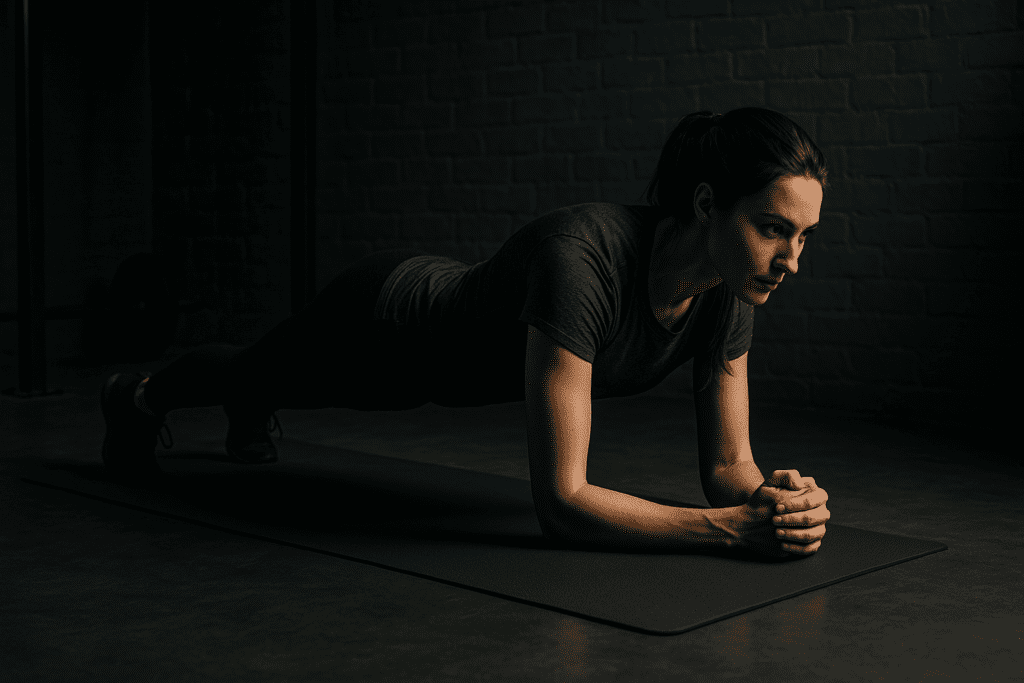In today’s fast-paced world, the search for a practical, effective, and sustainable full body workout routine for beginners is more important than ever—especially for those who are motivated to improve heart health, reduce the risk of cardiovascular disease, and enhance overall physical well-being. Sedentary lifestyles and rising rates of obesity, high blood pressure, and diabetes have made physical activity a cornerstone of modern preventive medicine. Fortunately, the benefits of a full body exercise routine for beginners extend far beyond the gym, touching everything from blood pressure regulation to metabolic function. But with the sheer volume of conflicting advice online, many beginners feel overwhelmed when deciding on the right workout routine to support cardiovascular wellness.
You may also like: Top Cardiologist-Approved Cardio Workouts to Improve Cardiovascular Fitness and Heart Health Naturally
This article unpacks the science, strategies, and structure behind a heart-smart workout plan, combining evidence-based exercise principles with practical advice for everyday people. Whether you’re looking for a home-based solution or a gym workout that fits into your weekly schedule, this comprehensive guide lays out the best workout programs for men and women who are just getting started—offering doctor-recommended insights to help you build strength, endurance, and a healthier heart.
Why Cardiovascular Health Depends on Full Body Movement
At the heart of every effective fitness program for men or women lies one essential truth: movement matters. The human body was designed to move, and every major organ system—including the cardiovascular system—benefits from regular, sustained physical activity. Cardiovascular health, in particular, responds positively to exercise that engages multiple muscle groups, improves circulation, and challenges both the heart and lungs. That’s where a full body workout routine for beginners proves especially powerful. It not only tones and strengthens muscles, but it also helps regulate cholesterol levels, lower blood pressure, and reduce systemic inflammation—all of which are key risk factors for cardiovascular disease.
When exercise targets large muscle groups through compound movements, the heart works harder to pump oxygenated blood to tissues throughout the body. This increase in cardiac output strengthens the heart muscle over time. Meanwhile, blood vessels gain flexibility and elasticity, improving overall vascular function. This is why even a basic workout routine for beginners that’s performed consistently can reduce the risk of heart attack, stroke, and heart failure. It’s not about perfection—it’s about progress and consistency.
The Core Principles of a Safe and Effective Beginner Workout Plan
Every successful workout routine begins with a clear understanding of the body’s limitations and needs. Beginners often fall into the trap of pushing too hard too soon, leading to burnout or injury. That’s why medical experts emphasize the importance of structured, progressive training that honors the body’s adaptation cycle. A good entry level gym workout, or a similarly structured home plan, should include a balance of cardiovascular conditioning, strength training, flexibility, and active recovery.
The most effective beginner workout plans are built on principles of frequency, intensity, time, and type—collectively known as the FITT principle. For example, a weekly workout plan might start with three sessions of moderate cardio (like brisk walking or cycling) paired with two sessions of light strength training using bodyweight or resistance bands. This balance helps the body adapt without overwhelming the cardiovascular system.
For those just beginning their journey, it’s important to start with exercises that feel manageable but still provide a challenge. A gym newbie workout should focus on form, safety, and learning how to activate key muscle groups. Similarly, a beginner gym workout for women or men should include gradual progressions—such as increasing reps, sets, or resistance as strength improves. Patience and consistency matter more than intensity, especially in the first eight to twelve weeks of training.
Home Gym Workout Exercises That Support Cardiovascular Wellness
Not everyone has access to a gym or prefers the gym environment. The good news is that a full body exercise routine for beginners can be done entirely at home with little or no equipment. Doctor-approved home gym workout exercises often incorporate dynamic movements like squats, lunges, push-ups, and planks. These movements target multiple muscle groups at once, elevating the heart rate and offering both cardiovascular and strength-building benefits.
When performed in a circuit-style fashion—with short rest periods between exercises—these workouts mimic high-intensity interval training (HIIT), which has been shown to improve heart health and insulin sensitivity. For example, a basic workout routine for beginners might include 30 seconds of bodyweight squats followed by 30 seconds of jumping jacks, repeated for several rounds. This keeps the heart rate elevated while working major muscle groups.
One of the greatest advantages of a home workout routine is flexibility. You can easily modify exercises based on your fitness level and schedule. Moreover, by creating a weekly workout plan that alternates between strength and cardio days, you can effectively manage fatigue and maximize recovery—two essential components of any safe fitness program for men and women.

Inside the Gym: Building a Smart Gym Routine for Beginners
For those ready to step into the gym, the options can feel overwhelming. Machines, free weights, resistance cables, and cardio equipment all compete for attention. That’s why having a structured gym workout plan is crucial for beginners. A well-designed beginner gym workout not only reduces the risk of injury but also ensures that each session is purposeful and contributes to long-term cardiovascular and musculoskeletal health.
A smart gym routine for beginners should begin with a full body warm-up using light cardio and mobility work. This primes the joints and muscles for movement while gradually increasing heart rate. Following the warm-up, a full body gym workout might include compound exercises like leg presses, chest presses, rows, and assisted pull-ups. These exercises activate large muscle groups and encourage systemic blood flow, making them ideal for heart health.
Many beginners also benefit from a strength training workout plan that includes two to three non-consecutive days of resistance work. When combined with moderate-intensity cardio—such as walking on a treadmill, cycling, or using the elliptical—this approach supports both muscle development and cardiovascular endurance. The goal of a good gym workout isn’t to exhaust you, but to build a strong foundation for lifelong fitness.
The Importance of Strength Training in Cardiovascular Fitness
While cardio often takes center stage in discussions about heart health, strength training is just as important—especially when incorporated into a balanced fitness program for men and women. Strength training enhances metabolic health by increasing lean muscle mass, which improves glucose regulation and lipid profiles. Over time, this helps reduce risk factors for heart disease, including insulin resistance and high cholesterol.
A strength training workout plan for beginners doesn’t need to be overly complex. In fact, simplicity and consistency yield better long-term results than sporadic high-intensity efforts. Movements like deadlifts, squats, rows, and overhead presses are fundamental to any workout regimen for men or women who are starting out. These exercises mirror real-life movement patterns and offer scalable progressions to prevent plateaus.
Importantly, strength training contributes to cardiac efficiency. Research shows that combining resistance exercises with aerobic training produces greater reductions in blood pressure than either type of training alone. That’s why a comprehensive weekly workout plan should always include strength days alongside cardiovascular sessions. Together, they create a synergy that promotes both structural and functional heart health.
Creating a Sustainable Weekly Schedule of Gym and Home Workouts
One of the most common mistakes beginners make is failing to create a realistic and sustainable weekly workout plan. Motivation is highest at the beginning of any fitness journey, but without structure, that motivation can fade quickly. A well-thought-out workout schedule for men or women not only keeps you accountable but also prevents overtraining and fatigue.
A balanced weekly schedule of gym and home workouts might include three strength training sessions, two cardio sessions, and one active recovery day. For instance, Monday could focus on upper body strength, Wednesday on lower body, and Friday on full body training. In between, light cardio sessions such as walking, swimming, or stationary cycling can support recovery and improve heart function. Sunday might be reserved for yoga, stretching, or a restorative walk.
Each workout should be guided by an exercise chart that outlines sets, reps, rest periods, and progression goals. This helps track performance and adjust variables based on how the body responds. For gym-goers, many free gym plans are available online and can be customized to fit specific fitness goals. For those training at home, similar programs exist that use resistance bands, bodyweight, or household items to simulate traditional equipment.
Tailoring a Workout Routine for Men: Cardiovascular and Muscle Health
Although most fitness advice applies broadly, there are unique considerations when designing workout programs for men, particularly when cardiovascular health and muscle building are primary goals. Men tend to focus heavily on aesthetics, sometimes at the expense of endurance and heart function. But a well-rounded fitness program for men must integrate both hypertrophy and cardiovascular conditioning to prevent long-term health complications.
The best workout programs for men are those that balance intensity and recovery. While lifting heavier weights can promote muscle growth, incorporating functional movements and heart-healthy cardio is essential. A full body gym workout two to three times per week can be complemented by 20 to 30 minutes of moderate cardio, such as rowing or stair climbing. These exercises support cardiovascular fitness while also improving VO2 max—a key marker of heart and lung efficiency.
A smart workout regimen for men might also involve supersets or circuits to keep the heart rate elevated throughout strength training. This approach, often found in circuit-based gym workout plans, mimics the benefits of HIIT while building lean mass. Whether you’re following a starter gym workout plan or a more advanced routine, including compound exercises that engage multiple joints and muscle groups ensures optimal training efficiency.
Beginner Gym Workout for Women: Building Confidence and Heart Health
For many women, the gym can be an intimidating environment—especially when first starting out. A beginner gym workout for women should be empowering, accessible, and structured to support not only physical goals but also mental confidence. Cardiovascular health is a top priority, particularly as women face increased risk of heart disease after menopause. That’s why combining resistance training with moderate aerobic activity is so important.
An ideal beginners workout plan for the gym might include exercises like seated rows, glute bridges, leg presses, and lat pulldowns, paired with 15 to 20 minutes of low-impact cardio. These foundational movements not only build strength but also help improve balance, posture, and joint stability. As strength improves, women can progress to free weight exercises and more dynamic training formats.
Equally important is the psychological aspect of training. Structured programs such as a free gym plan or a guided workout routine provide a sense of purpose and reduce decision fatigue. Women benefit from knowing exactly what exercises to perform, how to perform them safely, and how each movement contributes to long-term health. When supported by proper rest, hydration, and nutrition, this beginner-friendly approach can transform cardiovascular health and body composition over time.

The Role of Exercise Charts and Tracking Progress in Heart-Healthy Fitness
Tracking progress is an often overlooked but essential component of any workout plan. Exercise charts offer a visual representation of your goals, achievements, and areas needing improvement. Whether you’re following a gym newbie workout or an advanced fitness program for men, having a structured record of your sets, reps, rest intervals, and cardio sessions helps optimize training.
For beginners, this structure is especially important. It prevents aimless workouts and ensures each session builds upon the last. Over time, reviewing your weekly schedule of gym sessions or home workouts can help identify patterns, plateaus, and opportunities for growth. Charts also provide motivation, showing how far you’ve come even when progress feels slow.
Additionally, exercise charts allow for better communication with healthcare providers or fitness professionals. If you’re managing a cardiovascular condition, your doctor or trainer can use these logs to assess how your body is responding and make necessary adjustments. In this way, tracking tools become part of a holistic health strategy that empowers you to take ownership of your fitness and well-being.
Frequently Asked Questions (FAQ): Full Body Workout Routines for Cardiovascular Health
1. How can I mentally prepare for a full body exercise routine for beginners if I’ve never worked out before?
Starting a full body exercise routine for beginners involves more than just physical readiness—it requires a shift in mindset. Many new exercisers struggle with self-doubt, which can derail consistency before physical gains are even realized. One effective strategy is to reframe workouts as acts of self-care rather than obligations. Instead of focusing solely on weight loss or muscle gain, set small, behavior-based goals like “complete three gym workouts this week” or “increase my plank hold by 10 seconds.” Journaling progress and scheduling workouts like appointments can reinforce discipline and reduce decision fatigue. These mindset techniques create long-term adherence and help you build intrinsic motivation as part of your evolving workout plan.
2. How can I make my home gym workout exercises more effective without buying expensive equipment?
You don’t need a fully equipped gym to follow an effective full body workout routine for beginners. A set of resistance bands, a yoga mat, and household items like a backpack filled with books can replicate many movements found in standard gym routines for beginners. For example, using a sturdy chair for triceps dips or step-ups mimics gym machines and provides sufficient stimulus for muscle development. You can also modify tempo—for instance, slowing down the eccentric (lowering) phase of a bodyweight squat increases time under tension and builds strength without weights. Integrating these techniques into your home gym workout exercises can elevate your basic workout routine for beginners to a higher level of effectiveness.
3. What are some overlooked mistakes men make when starting a new workout routine for men focused on heart health?
One of the most common mistakes in a new workout routine for men is neglecting cardiovascular conditioning in favor of hypertrophy. While building muscle through a strength training workout plan is beneficial, many beginner gym workouts fail to include adequate aerobic work, which is essential for heart function. Another oversight is skipping mobility and flexibility exercises, which increases injury risk and impairs performance over time. Many men also overtrain in the early weeks without aligning their workout schedule for men with proper recovery principles. Instead, alternating resistance days with moderate-intensity cardio sessions like rowing or incline treadmill walking creates a more sustainable and heart-conscious fitness program for men.
4. How can a weekly schedule of gym sessions improve my recovery and performance as a beginner?
A structured weekly schedule of gym sessions does more than organize your time—it creates physiological rhythm and balance across your training week. Following a consistent gym workout plan allows your body to anticipate stress and recovery patterns, optimizing hormonal responses like testosterone and cortisol. For instance, scheduling strength training on Monday, Wednesday, and Friday, with active recovery or mobility work in between, prevents overuse injuries and central nervous system fatigue. Integrating both full body gym workouts and lighter activity days into your weekly workout plan supports better sleep quality, reduces soreness, and enhances motivation. A well-crafted beginner workout plan should always account for both exertion and restoration.
5. What’s the best way to personalize a beginner gym workout for women who are also managing cardiovascular risk factors?
For women managing high blood pressure, diabetes, or cholesterol concerns, it’s essential to customize a beginner gym workout for women with safety and progression in mind. Starting with low-impact cardio machines such as the recumbent bike or elliptical reduces joint strain while still improving vascular function. Strength work should begin with controlled movements, like leg presses or cable rows, to develop muscular endurance safely. A well-monitored heart rate zone, typically 50–70% of max HR, is ideal during the early phases of a fitness program for women addressing cardiovascular concerns. By incorporating a heart rate monitor and a basic workout routine for beginners, women can measure intensity and progress with confidence.
6. Are there specific workout programs for men that can help address both mental stress and heart health at the same time?
Absolutely. Some of the most effective workout programs for men now incorporate mind-body elements like controlled breathing, mindfulness, and tempo-based strength work to reduce sympathetic nervous system overdrive. For example, performing a full body gym workout with extended rest periods and nasal breathing between sets helps downregulate cortisol and support parasympathetic recovery. Likewise, programs that alternate high-effort compound lifts with light aerobic intervals—such as walking on an incline—can reduce anxiety while training the cardiovascular system. Men who follow a workout regimen for men that blends strength, flexibility, and introspective elements often report improved mood and energy levels alongside better biomarkers of heart health.
7. What signs indicate it’s time to progress beyond a starter gym workout plan into more intermediate training?
When a starter gym workout plan starts to feel too easy, it’s time to reevaluate your load, volume, and movement complexity. One clear sign is the ability to complete your gym workout without noticeable fatigue or elevated heart rate. Another is when strength gains plateau and the same weight no longer stimulates muscular adaptation. At this point, progressing to more compound movements—like barbell deadlifts or kettlebell swings—can elevate both metabolic and cardiovascular challenge. Tracking your performance on an exercise chart can also highlight trends that indicate readiness for advancement. As you move forward, don’t abandon the structure of your weekly workout plan—simply evolve the intensity and variety within it.
8. Can full body workout routines for beginners also support weight loss in addition to cardiovascular health?
Yes, a full body workout routine for beginners is highly effective for those looking to lose weight while improving heart function. The combination of strength training and moderate-intensity cardio elevates metabolic rate both during and after exercise due to the afterburn effect, or excess post-exercise oxygen consumption (EPOC). For maximum results, structure your gym routine for beginners to alternate between resistance days and calorie-burning activities like circuit training or brisk walks. Home gym workout exercises can also be adapted for fat loss by incorporating time-based intervals and shorter rest periods. Over time, consistent adherence to your workout plan enhances insulin sensitivity and energy expenditure, contributing to gradual, sustainable weight reduction.
9. How should someone new to fitness evaluate free workout plans online to ensure they’re medically appropriate?
Not all free workout plans are created with safety or individual health needs in mind. A beginner should first verify whether the plan includes a warm-up, cooldown, and rest days—these are non-negotiable for cardiovascular safety. Look for free gym plans that are created or reviewed by certified professionals or licensed medical experts, and avoid routines that promise extreme results in short timeframes. Additionally, ensure that any full body exercise routine for beginners includes movement instructions and modifications based on ability level. Incorporating an exercise chart that tracks reps, tempo, and progression ensures that your chosen plan fits within your fitness level and aligns with your workout goals.
10. How can I adapt a gym newbie workout for long-term success if I travel frequently or have an unpredictable schedule?
Adapting a gym newbie workout for a hectic lifestyle requires strategic flexibility. Begin by identifying core movements in your gym workout plan that can be performed anywhere—such as squats, lunges, push-ups, and planks—and build a mobile-friendly version of your routine. This becomes your travel-ready, hotel-room-friendly fitness program for men or women. Use digital tools to log your workouts and follow a simplified weekly schedule of gym or bodyweight sessions based on available equipment. While consistency is ideal, success lies in adaptability. A good entry level gym workout becomes sustainable when you internalize movement patterns and rely on routines that are portable, modifiable, and rooted in cardiovascular safety.

Conclusion: How to Begin and Sustain a Heart-Healthy Full Body Workout Routine for Beginners
Choosing the best full body workout routine for beginners is not just about aesthetics or weight loss—it’s a powerful act of self-care that supports lifelong cardiovascular health. Whether you’re starting with home gym workout exercises or transitioning into a gym routine for beginners, the key is to create a structure that balances strength, endurance, and rest. A basic workout routine for beginners doesn’t have to be complicated; what matters most is that it’s consistent, purposeful, and tailored to your needs.
For those seeking guidance, there are countless free workout plans and starter gym workout plans available, but not all are created with heart health in mind. Look for those grounded in medical science and designed to reduce risk factors for cardiovascular disease. Whether your goal is to follow a full body gym workout, build muscle through a strength training workout plan, or simply stick to a weekly workout plan that includes walking and bodyweight training, your heart will thank you for the effort.
As you move forward, remember that even good entry level gym workouts or a weekly schedule of gym activities can dramatically impact your cardiovascular system. Stay patient, stay consistent, and stay informed. Your body—especially your heart—is more capable of change than you may realize.
beginner fitness tips, heart-healthy exercises, total body strength training, low-impact cardio workouts, muscle toning for beginners, fitness for heart health, home fitness routines, men’s strength building, women’s beginner fitness, cardiovascular training basics, resistance training for health, gym confidence for beginners, safe exercise for heart patients, lifestyle fitness strategies, endurance building workouts, fitness motivation for beginners, effective bodyweight exercises, healthy workout habits, strength and cardio balance, long-term fitness planning
Further Reading:
20 cardio exercises to do at home with minimal equipment, from beginner to advanced
Muscle & Strength Full Body Workout Routine
15 Easy Exercises to Do at Home: A Beginner’s Guide From Physical Therapists
Disclaimer
The information contained in this article is provided for general informational purposes only and is not intended to serve as medical, legal, or professional advice. While MedNewsPedia strives to present accurate, up-to-date, and reliable content, no warranty or guarantee, expressed or implied, is made regarding the completeness, accuracy, or adequacy of the information provided. Readers are strongly advised to seek the guidance of a qualified healthcare provider or other relevant professionals before acting on any information contained in this article. MedNewsPedia, its authors, editors, and contributors expressly disclaim any liability for any damages, losses, or consequences arising directly or indirectly from the use, interpretation, or reliance on any information presented herein. The views and opinions expressed in this article are those of the author(s) and do not necessarily reflect the official policies or positions of MedNewsPedia.


